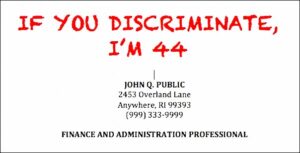
By the Numbers: Employee Burnout, Workplace Discrimination, and the Great Resignation
Sometimes research emerges that sets a new high-water mark on a troubling trend — and it’s well worth paying attention to. That’s the case with

Sometimes research emerges that sets a new high-water mark on a troubling trend — and it’s well worth paying attention to. That’s the case with

In a bittersweet lesson, the pandemic has shone a bright light on the inequalities that we’ve lived with for far too long. These inequalities continue

Age discrimination has no place at work — and yet it persists. Why? What should we do? The TalentCulture community speaks…

Do you want to lead others? Start by leaving behind age stereotypes that keep us all from getting ahead. Try these 5 steps

This week, #TChat offers 3 ways to play! We marry old school with new tech, and hopefully advance workplace culture and practices for everyone